Aprendiendo lecciones de vida: Parte 3
WHEC Boletín Práctica Clínica y de gestión para proveedores de atención médica. Educación subvención prevista de Salud de la Mujer y el Centro de Educación (WHEC).
A Resource and Practical Guide for Teachers, Students and Administrators (Schools and Universities) for Planning Programs for Youth Development
The Women's Health and Education Center (WHEC) - A Community-based Advocacy Charity for people worldwide, and a United Nations ECOSOC-accredited non-governmental organization (NGO in Special Consultative Status, since 2008), highlights the importance of advocacy projects / programs, and importance of partnership. Mental health governs so much of our lives, and we must give it the attention and care that it requires in order to improve quality of life and social-emotional wellbeing. Globalization, war, terrorism, social instability, disease, poverty are among the key challenges facing the world today. United Nations (UN) Sustainable Development Goals (SDGs) - 17 Goals to transform the world are a call for action by all countries - poor, rich and middle-income - to promote prosperity while protecting the planet. WHEC aims to encourage students to learn the SDGs in a fun, engaging way, empowering them to make a difference.
The purpose of this document is to teach these skills launched for Sustainable Development Goals (SDGs) 3, 4, 5: Learning Life Lessons Series. These so-called Life Lessons include decision making, problem solving, critical thinking, self-esteem, communication, self assessment and coping strategies. People with such skills are more likely to adopt a healthy lifestyles. Part III addresses these two chapters: 8) Helping the world become a better place; and 9) Becoming an effective changemaker. Reading and learning about Sustainable Development Goals (SDGs) are essential to children’s growth and development; stories can fuel their imagination and raise awareness of new possibilities.
CHAPTER VIII – HELPING THE WORLD BECOME A BETTER PLACE
STEP 1 - IMPROVING LOCALLY
Volunteer:
Volunteering with a local charity is a great way to improve the world around you. You will be able to do the most direct good and see the impact on the people that you help. Tutor disadvantaged kids; work at local soup kitchen; work with a charity like Habitat for Humanity.Reduce Negative Impact:
Being good stewards of the world has a significant and positive impact on your environment and helps to preserve the planet for the next generation. Be consistent about recycling; reduce the waste you produce and compost; conserve water and grow some of your own food; if you really want to help your local environment, buy and install solar panels for your home and switch to public transit, a bike, or an electric vehicle; increase positive impacts.Be Civically Engaged:
Exercise your right to vote. Be engaged in your city, states, and country by voting and talking with the politicians you support, as well as educating others on important issues.Make A Statement With What You Buy:
Whenever you can, buy local products that support the people around you and your local economy. When a company makes poor choices that negatively affect people, stop buying their products. Buy fair trade; fair trade items will almost always be labeled as such. Avoid items that are often unethically sourced.Take Pride In Where You Live:
Combine good citizenship and environmental clean up by volunteering with your city to plant trees, maintain sidewalks, and keep green spaces green. Never litter when you are out and about. Always try to find a proper trash can or recycling bin for your trash! Clean up trash that you do find, even if someone else dropped it.STEP 2 - IMPROVING AT HOME
A lot of the time you can get so caught up in working to improve the globe as a whole, that you forget there are lots of things that we can do every day at home that have a positive impact too. One of the best things you can do easily, and every day is to treat others how you want to be treated.
Be Kind:
Do something nice for someone as often as you can. This can be small things like making someone a birthday present, or big things like driving someone around until they get their car fixed. When we work together, everything runs more smoothly, and we are better able to further invest those gains in benefiting the rest of the globe.Set A Good Example:
For your friends and family members, and educate them on the issues so that they can make good decisions too. Help them to understand why these things are important, so that they are also motivated to change their lives. By changing a few minds you can double, triple, or even more greatly increase your positive impact on the world.Get A Job:
Almost any job that you get can have a positive impact on your community. You will be providing a service to people who want it, adding to the economy in your immediate area and improving the life of everyone around you. It will also give you money that you can use to donate to charity or fund small business loans.Be Positive:
Let your attitude show everyone that a smile and hopeful attitude can really improve the day of everyone around you. By finding the upsides in tough situation and working hard to fix problems, you can positively impact the people you come into contact with.Be Helpful to Everyone:
We have lots of opportunities to be nice and helpful to other people every day. Many times we do not take the opportunity because we think we are too busy or someone else will help. If you want to make the world around you better, just do the right thing and help. Instead of thinking that it is someone else’s problem.Work With Different Cultures:
Working with different cultures is a necessary skill for anyone in culturally diverse work environment. Immigration, technological advances, and the emergence of global virtual work teams have increasingly exposed workers to other cultures. If you have never worked with someone from a different culture before, it can be adjustment. While you might encounter some challenges, you will likely find it a rewarding experience. Work on becoming more aware of your works and actions. Based on what you know about that culture, is touching in the workplace appropriate? A good "rule of thumb" is to take a moment to consider your words before you speak. Figure out a way to rephrase your words. It may take a while for you to get used to working with people from different cultures. Don’t worry that is normal.- Practice patience. It may take you some time to adjust to working with our new co-workers or clients, and that is ok.
- Use humor. Remember that different people have different senses of humor.
- Look at the issues from a different perspective. Clarify what important terms mean to each individual. Looking at an issue from an alternate perspective can help you find solutions that you might not have considered.
- Accept differences. Be aware that there will likely be differences in communication styles. Part of choosing the right frame of mind means that you are open to differences.
- Building relationships. Spend time learning about other cultures. Head to local library, this can give you a solid overview of the culture about which you are learning.
- Be willing to make mistakes. Laugh it off and apologize. These things happen when you are learning new cultural norms.
- Be sincere.
20 SMALL WAYS TO HELP MAKE THE WORLD A BETTER PLACE
- Donate your time, skills, money and volunteer for a cause.
- Give an elderly person some of your time.
- Donate blood or plasma.
- Put your phone away and focus on what or who is in front of you.
- Adopt or rescue pet.
- Do not listen to, or participate in, Gossip.
- Say please and thank you often.
- Cook someone a healthy meal.
- Declutter, recycle, and donate.
- Tell someone they did a Good Job.
- Respect others at all times, no matter who they are.
- Allow someone else their time to shine.
- Travel respectfully.
- Treat everyone the way you would like to be treated.
- Read and share positive stories. Step through life with honesty and integrity.
- Listen without passing judgment. Focus on positive.
- Decrease your use of plastic.
- Sprinkle kindness around like it is a fairy dust.
- Mentor/coach someone free. Be a positive role model to kids/people younger than you.
- Do what you love. It will inspire others.
Just think about it. If we all did one small thing, even if it were only every now and then, imagine the impact we could have on the world!
STEP 3 - IMPROVING GLOBALLY
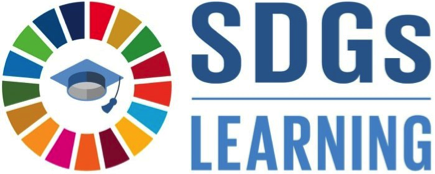
Understanding United Nations 17 Sustainable Development Goals (SDGs)
The 2030 Agenda for Sustainable Development, adopted by all United Nations Member States in 2015, provides a shared blueprint for peace and prosperity for people and planet, now and into the future. At its heart are the 17 SDGs, which are an urgent call for action by all countries, developed and developing, in a global partnership. They recognize that ending poverty and other deprivations must go hand in hand with strategies that improve health and education, reduce inequality, and spur economic growth, all while tracking climate change and working to preserve our oceans and forests.
Today, the Division for Sustainable Development Goals (DSDG) in the United Nations Department of Economic and Social Affairs (DESA) provides substantive support and capacity-building for the SDGs and their related thematic issues. The Women's Health and Education Center (WHEC) aims to help facilitate this engagement.
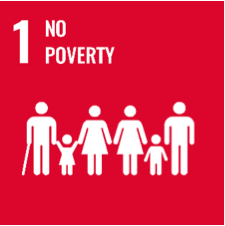
1.End Poverty in all its forms everywhere
The global poverty rate is projected to be 7% in 2030. COVID-19 has led to the first rise in extreme poverty in a generation. An additional 119 - 124 million people were pushed back into extreme poverty in 2020.
Governments worldwide have put in place 1,600 short-term social protection measures in response to COVID-19; but 4 billion people are still not covered by social protection. Working poverty disproportionately affects women and youth, and the pandemic is likely to magnify those disparities. In Least Developed Countries (LDCs), one third or 33.5% of employed women were living in poverty in 2019, compared with 28.3% of employed men. Worldwide, young workers are twice as likely to be living in poverty as adults, reflecting lower earnings and poorer quality jobs.

2.End Hunger, achieve food security and improved nutrition and promote sustainable agriculture
Worldwide, number of undernourished people in the world: 607 million in 2014, 650 million in 2019, 720 - 811 million in 2020. The Pandemic will worsen child malnutrition: 22% (149.2 million) of children under age 5 have stunted growth; 6.7% (45.4 million) of children under age 5 suffer from wasting; 5.7% (38.9 million) of children are overweight. These 2020 estimates reflect that almost one third of women of reproductive age globally suffer from anemia, in part due to nutrition deficiencies. 2.37 billion people are without food or unable to eat a healthy balanced diet on a regular basis.

3.Ensure healthy lives and promote wellbeing for all
Health workers are in short supply in many countries; it has reached to its limits by the pandemic. Nurses and midwives are 150 per 10,000 people in Northern America, whereas in Sub-Sharan Africa it is 10 per 10,000 people.
Scaling up investments in Universal Health Care is essential. Pandemic
has halted or reversed progress in health and shortened life expectancy. A decade of progress in reproductive health, maternal health and child health has been stalled or reversed by COVID-19.
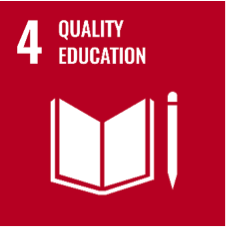
4.Ensure inclusive and equitable quality education and promote lifelong learning opportunities for all
Basic school infrastructure to build back better is lacking in many countries. Proportion of schools in Least Developed Countries (LDCs) - proportion of schools in LDCs with basic infrastructure: 56% drinking water, 33% electricity, and 40% handwashing facilities.
An additional 101 million or 9% of children in grades 1 through 8 fell below minimum reading proficiency levels in 2020. Slow progress in school completion is likely to get worse.
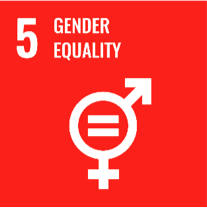
5.Achieve gender equality, empower all women and girls
Women's equal participation in decision making is crucial for response and recovery; but gender parity remains far off. Violence against women persists at unacceptable high levels and is intensified by the pandemic. One in three women (736 million) have been subjected to physical and/or sexual violence, at least once in their lifetime since the age of 15 to 45
years (2000-2018). Up to 10 million girls will be at risk of child marriage, over the next decade as a result of pandemic. Women already spend about 2.5 times as many hours as men on unpaid domestic and care work.

6.Ensure availability and sustainable management of water and sanitation for all
2.3 billion people live in water-stressed countries (2020). Billions of people still lack access to safe drinking water, sanitation and hygiene in 2020. 129 countries are not on track to have sustainably managed water resources by 2030. Ensuring universal access is essential. Between 1970 and 2015,
natural wetlands shrank by 35%; 3 times the rate of forest loss.
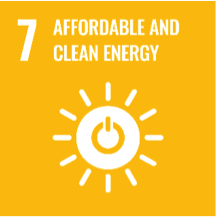
7.Ensure Access to affordable, reliable, sustainable and modern energy for all
One third of the world’s population (2.6 billion people) use dangerous and inefficient cooking systems. 759 million people lack access to electricity. 3 out of 4 of them live in Sub-Saharan Africa. UNDESA and the International Renewable Energy Agency (IRENA) signed a
Memorandum of Understanding (MoU) on 20 September to move
forward the sustainable agenda and support sustainable development of SDG 7. Renewable energy is the most effective climate action tool available.

8.Decent work and economic growth
The global unemployment rate in 2017 was 5.6%, down from 6.4% in 2000. Globally, 61% of all workers were engaged in informal employment in 2016. Excluding the agricultural sector, 51% of all workers fell into this employment category. Men are 12.5% more than women in 40 out of 45 countries in Asia. The global gender pay gap stands at 23% globally and without decisive action, it will take another
68 years to achieve equal pay. Women’s labor force participation rate is 63% while that of men is 94%. Despite their increasing presence in public life, women continue to do 2.6 times the unpaid care and domestic work that men do.

9.Build resilient infrastructure, promote sustainable industrialization and foster innovation
16% of global population does not have access to mobile broadband networks. LDCs have immense potential for industrialization in food and beverages, and textiles and garments, with good prospects for sustained employment generation and higher productivity. Developing countries continue to outpace developed economies in renewables
investment. In 2019, they committed $152.2 billion, compared to $130 billion for developed countries.
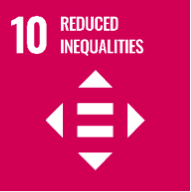
10.Reduced inequalities within and among countries
Evidence from developing countries shows that children in the poorest 20% of the populations are still up to 3 times more likely to die before their 5th birthday than children in the richest quintiles. Up to 30% of income inequality is due to inequality within households, including between women and men. Women are also more likely than men to live below 50% of the medical income. Only 28% of persons with significant disabilities have access to disability benefits globally, and only 1% in low-income countries.

11.Make cities inclusive, safe, resilient and sustainable
Half of humanity - 3.5 billion people - live in cities today and 5 billion people are projected to live in cities by 2030. 95% of urban expansion in the next decades will take place in developing countries. 828 million people live in slums today and most of them are found in Eastern and South-Eastern Asia. Rapid urbanization is exerting pressure on fresh water supplies, sewage, and living environment, and public health. cities account for between 60% and 80% of energy consumption and generate as much as 70% of human induced greenhouse gas emissions. 90% of urban growth is forecasted to happen in Asia and Africa in the next 30 years.
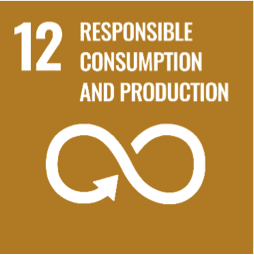
12.Ensure sustainable consumption/production patterns
According to latest projections, the global population could grow to around 8.5 billion in 2030, 9.7 billion in 2050. The equivalent of almost 3 planets could be required to provide natural resources needed to sustain current lifestyles. Less than 3% of world's water is fresh and drinkable of which 2.5% is frozen in the Antarctica, Arctic and glaciers. More than 1 billion people still do not have access to fresh
water. Over 2 billion people live in countries experiencing high water stress. The global population without access to electricity fell from 1.2 billion in 2010 to 840 million in 2017.
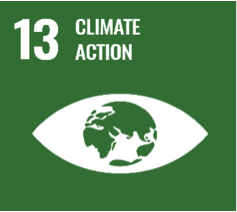
13.Take urgent action to combat climate change
Developed country parties continue to make progress towards the goal of jointly mobilizing $100 billion annually by 2020 for mitigation actions. From 1880 to 2012, average global temperature increased by 0.85 Deg.C. Oceans have warmed, the amount of snow and ice have diminished, and sea level has risen. Global emissions of carbon dioxide (CO2) have increased by almost 50% since 1990. It is still possible,
using a wide array of technological measures and changes in behavior, to limit the increase in global mean temperature to 2 degrees Celsius above preindustrial levels. The Paris Agreement is available at: https://unfccc.int/sites/default/files/english_paris_agreement.pdf
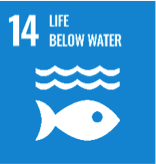
14.Conserve/sustainably use the oceans, seas, marine resources
Oceans cover 3-quarters of the Earth's surface, contain 97% of the Earth's water, and represent 99% of the living space on the planet by volume. Oceans absorbs 30% of carbon dioxide produced by humans, buffering the impacts of global warming. Over 3 billion people depend on marine and coastal biodiversity for their livelihoods. Marine fisheries directly or indirectly employ over 200 million people. Roughly 80% of marine and coastal pollution originates on land - including agricultural run-off, pesticides, plastics and untreated sewage. Around 680 million people live in low-lying coastal zones and that is expected to increase to a billion by 2050.
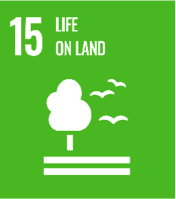
15.Sustainably manage forests, combat desertification, halt and reverse land degradation, halt biodiversity loss
Human activity has altered almost 75% of the earth's surface, squeezing wildlife and nature into ever smaller corners of the planet and increasing risks of zoonotic diseases. Around 1.6 billion people depend on their livelihood, including 70 million Indigenous people. Forests are home to more than 80% of all terrestrial species of animals, plants and insects. Arable land loss is estimated at 30 to 35 times the historical rate. Illicit poaching and trafficking of wildlife continues, with nearly 7,000 species of animal and plants reported in illegal trade involving 120 countries.

16.Promote just, peaceful and inclusive societies
Among the institutions most affected by corruption are the judiciary and the police. Corruption, bribery, theft and tax evasion cost some of US $1.26 trillion for developing countries per year. Approximately 28.5 million primary school age children who are out of school live in conflict-affected areas. Violence against children affects more than 1 billion children around the world and costs societies up to US $7 trillion a year. 1 in 3 students are bullied by their peers.
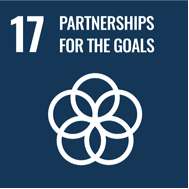
17.Revitalize Global Partnership for Sustainable Development
79% of imports from developing countries enter developed countries duty-free. Trade, foreign direct investment and remittances all projected to decline by up to 40% in 2020. Almost half of world's population is not connected to the internet, particularly in poor countries. The debt burden on developing countries remains stable at about 3% of export revenue. Strong international cooperation is needed now more than ever to ensure that countries have the means to recover from pandemic, build back better and achieve the SDGs.
Suggested Reading
Sustainable Development Goals (SDGs); available at: https://sdgs.un.org/
United Nations Volunteer’s Programme; https://www.unv.org
Peace Corps; https://www.peacecorps.gov/
CHAPTER IX - BECOMING AN EFFECTIVE CHANGE-MAKER
A change-maker is someone who spots opportunity that will contribute to the greater good. They creatively set about innovating to fulfill that opportunity. The change-maker inspires and influences others to join and support them in their change making journey, persisting until the positive difference is achieved. Other words for change-maker include: Innovator, Entrepreneur, Reformer, Influencer, Mover & Shaker, Spearhead, Change leader. The role of change-maker is to achieve positive change for greater good by taking innovative action. It is also to influence and inspire others to join, support and contribute to the change effort until it is achieved. Change makers work in a variety of contexts, for example, social change, business, education, environment, technology. Innovation and change making are inextricably linked
CHARACTERISTCS OF A CHANGE-MAKER
Successful change makers share these five characteristics:
- Resilience - The tenacity to persist, and also to withstand criticism.
- Vision - A clear view of the brighter future towards which they are working.
- Commitment - A deep conviction, demonstrated by action, that wheat they are working towards really matters.
- Integrity - They do the right thing, no matter how difficult that might be.
- Connection - They relate to others, create community and galvanize people to join the mission of change.
CHANGE-MAKER TALENT DEVELOPMENT
As a leader, it is important to not only be a change-maker yourself, but also to develop change making talent in others. Change means that we have to rethink thigs, to reimagine and work out different ways of doing things.
- Recognize your place in the world. All changes begins with self. Spend time in knowing who you are, and how you relate to the world outside of you. These are the things that will make you personally understand how you can improve yourself, and effectively look at the world as a place capable of change too.
- Empathize. The struggle is unbelievably difficult for everybody.
- Let your spirit of generosity always grow. Take a long moment in time to understand what all conspires in the world to make your life easier. While there is no true measure of generosity, there is always your own personal experience and your own understanding of what you can offer to a situation.
- Inspire others by doing what you love. It takes a lot of effort to crack this one. For one, a lot of us define ourselves by the things we do and stuck in our ruts of working long hours, tending to family and what not, it is easy to lose our sense of identity, and sometimes, our sense of purpose. True joy and inspiration, is only seen in those who preserve and do what they love endlessly.
- Give things and people the time and importance they deserve. Your presence and absence to people and situations make positive or negative impacts based on you taking the time to analyze and know what is important, and what is just clutter.
- Understand your impact on the planet, and improve. Your city, town, and homeland are going through immense change: be mindful of it, and whenever you can affect it, at whatever level, do it.
- Educate yourself. Taking time to listen, explore, understand and actually engage in conversation that can make things better is a good start.
- In any situation that requires you to step up - step up. None of us are really blind to the atrocities that surround us. Paying attention to domestic violence in our neighborhoods, bullying among the children (and adults) around, squabbles on the street - we can actually affect.
- Be the person people can look up to for solutions. Life is tough. No matter what way you see it, there are people around you that may be stuck with situations that may or may not be out of your scope of helping. If you can help, great, that is much better. If you cannot, at least you know that the person is looking out for you, and with enough time, you actually may be the bringer of the solution.
- Appreciate.
- Promote the idea that, we are all important to each other. It is easy to see the differences amongst us as things that divide us.
ABOUT THE ECONOMIC AND SOCIAL COUNCIL (ECOSOC) YOUTH FORUM
The Economic and Social Council (ECOSOC) Youth Forum is an annual initiative of the President of the Council. It has evolved into a key platform where young people can contribute to policy discussions at the United Nations through their collective ideas, solutions and innovations. As the main platform for the youth to share their ideas at the global level, the Forum allows representatives of youth-led and youth-focused organizations and networks, youth advocates and other youth stakeholders to dialogue with Member States, and to explore ways and means of promoting youth development and engagement.
The main focus if the role of youth in the monitoring, review and the implementation of the Agenda and the achievement of the Sustainable Development Goals (SDGs). In that context, the Youth Forum offers a unique opportunity for youth to voice their opinions, share ideas, and think together about what should be done to achieve the 2030 agenda, but also to how to address the challenges they face as youth and the contributions they can make to achieve the youth-specific SDG targets.
Participation in the Forum is by invitation where youth participants are selected by National Youth Councils, regional youth organizations, as well as youth-led and youth-focused organizations and networks affiliated with the Major Group for Children and Youth (UN-MGCY) and the International Cooperation Meeting of Youth Organizations (ICMYO).
SUGGESTED READING
The U.S. Partnership for Education and Sustainable Development; Available @ https://uspartnership.org/pages/changemakers
EDITOR’S NOTE
The 2030 Agenda for Sustainable Development, adopted by all United Nations Member States in 2015, provides a shared blueprint for peace and prosperity for people and the planet, now and into the future. The 2030 Agenda recognizes that capacity building, is an essential part of means of implementation for SDGs. Each SDG targets relating to means of implementation, including capacity-building. Moreover, SDG 17, which aims to: "Enhance international support for implanting effective and targeted capacity-building in developing countries to support national plans to implement all the sustainable development goals, including North-South, South-South and triangular cooperation." Capacity building for 2030 Agenda - What We Do?
- Support governments and stakeholders to strengthen the contribution of micro-, small-, and medium-sized enterprises (MSMEs) to the achievement of the 2030 Agenda and the SDGs, etc.
- Strengthen the capacity of SIDS (Small Island Developing States) to achieve Agenda 2030 and SAMOA (Small Island Developing States Accelerated Modalities of Action) Pathway.
- Strengthen the capacity of countries to integrate the 2030 Agenda and the SDGs into national development plans and sustainable development strategies. Use is made of practical tools and peer learning to facilitate implementation.
- Promote multi-stakeholder and participatory approaches through the provision of both workshops and online training courses.
- Support governments and stakeholders to monitor and develop effective partnerships for the SDGs.
Capacity building has long been recognized as one of the means of implementation for the achievement of sustainable development.
OTHER TOPICS IN THIS SERIES
- Learning Life Lessons Series: Part I
http://www.womenshealthsection.com/content/gynmh/gynmh016.php3 - Learning Life Lessons Series: Part II
http://www.womenshealthsection.com/content/gynmh/gynmh017.php3
Publicado: 11 April 2022
Dedicated to Women's and Children's Well-being and Health Care Worldwide
www.womenshealthsection.com


